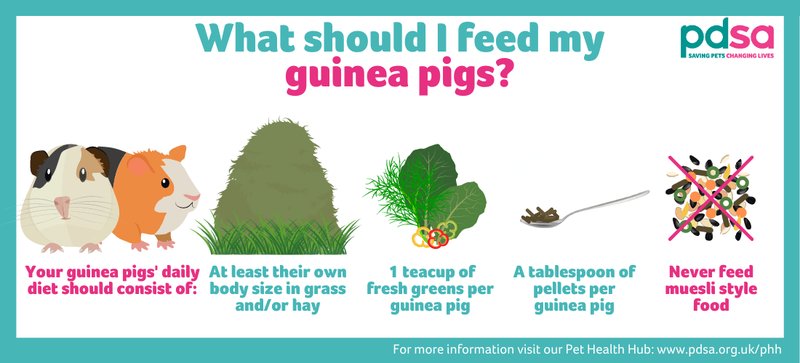
So, what do guinea pigs actually eat? Well, let’s dive into their diet and feeding schedule. It’s a little like piecing together a puzzle: each part is important to complete the whole picture. From fresh veggies to essential vitamins, I’ll help you understand how to whip up the best meal plan for your furry companion.
The Basics of a Guinea Pig’s Diet
To start, it’s crucial to note that guinea pigs are herbivores. This means they thrive on a diet rich in plant material. Think of them as little crunchy munchers, always ready to nibble on something green. The foundation of their diet should be high-quality, timothy hay or grass hay. This not only provides fiber, which is essential for their digestion, but it also helps keep their teeth healthy by naturally wearing them down as they chew.
A good rule of thumb is to give your guinea pig unlimited access to hay. That’s like giving them a bottomless bowl of their favorite snack! You might also find other types of hay, like orchard grass or meadow hay, to mix things up. Just be careful with alfalfa hay—while it’s delicious, it’s too rich in calories and protein for adult guinea pigs and is best saved for young or pregnant ones.
Pellets: The Good Kind
Next up in the guinea pig food pyramid are pellets. But hold on—not all pellets are created equal! You want to look for high-quality guinea pig pellets that contain vitamin C, as guinea pigs cannot produce this vitamin on their own. A lack of vitamin C can lead to serious health issues, like scurvy, which is definitely something to avoid.
Generally, a tablespoon or two of pellets per day is enough for an adult guinea pig. Think of it as their version of a multivitamin. Just remember to check the ingredients. Avoid pellets that are high in seeds or dried fruit since these can lead to obesity and other health problems.
Fruits and Vegetables: A Colorful Treat
Now, let’s sprinkle in some fun—fruits and veggies! These can jazz up your guinea pig’s diet and provide essential nutrients. But here’s the thing: not all fruits and veggies are safe for them. Leafy greens like romaine lettuce, kale, and bell peppers are excellent choices. Bell peppers, in particular, are great because they’re high in vitamin C.
You can treat your guinea pig to small portions of fruits like apples, strawberries, or blueberries, but keep it to just a couple of times a week. Fruit is tasty but also high in sugar, so moderation is key. You wouldn’t want your buddy to get a sweet tooth!
Understanding Their Water Needs
Water is the unsung hero of your guinea pig’s health. They should have access to fresh, clean water at all times. Using a water bottle with a sipper tube can help keep their water clean and prevent spills. If you don’t see them drinking, don’t worry too much; sometimes they just prefer to sip straight from the bottle.
Make it a habit to change their water daily. It’s a small task that goes a long way in keeping them hydrated and healthy. You might even consider adding a few drops of vitamin C to their water occasionally, but check with your vet first to ensure it’s safe for your specific guinea pig.
Feeding Schedule: Timing Matters
Creating a feeding schedule can be super helpful, especially if you’re a busy person. You might be wondering, “How often should I feed my guinea pig?” Ideally, they should have access to hay and water all day long. When it comes to pellets and fresh veggies, aim for once in the morning and again in the evening. This routine helps mimic their natural grazing habits and keeps their energy steady throughout the day.
You don’t have to worry about overfeeding, especially with hay. Just keep an eye on how much they actually eat and remove any bad or spoiled food promptly. If you’re introducing new veggies, do it slowly. This way, you can see how their tummy reacts and adjust accordingly.
Common Foods to Avoid
You might be thinking, “What about all the other foods I have lying around?” Well, there are definitely some foods you should steer clear of. Leafy greens like iceberg lettuce can lead to digestive issues, and starchy vegetables like potatoes are a no-go.
Also, certain fruits and treats like chocolate or dairy products can be harmful to their health. It’s best to keep things simple and stick to what’s safe. A quick online search or a chat with your vet can help clarify any food questions you might have.
Health Monitoring Through Diet
Lastly, it’s important to remember that what you feed your guinea pig can affect their overall health. Keep an eye on their weight and behavior. If they seem lethargic or stop eating, it might be time for a vet visit.
A balanced diet not only keeps your guinea pig healthy but also helps prevent common issues like obesity and dental problems. Regularly switching up their veggies can provide variety, ensuring they get a full range of nutrients.
Remember, every guinea pig is unique, and their preferences can vary. Pay attention to what your little buddy enjoys, and keep exploring new safe options.
In conclusion, when you’re thinking about what guinea pigs eat, it’s all about a balanced mix of hay, pellets, fresh veggies, and fruits in moderation, along with plenty of fresh water. Setting a feeding schedule ensures they get their meals consistently, promoting a happy, healthy life for your furry friend. With the right nutrition, you’ll have a playful companion by your side for years to come!
